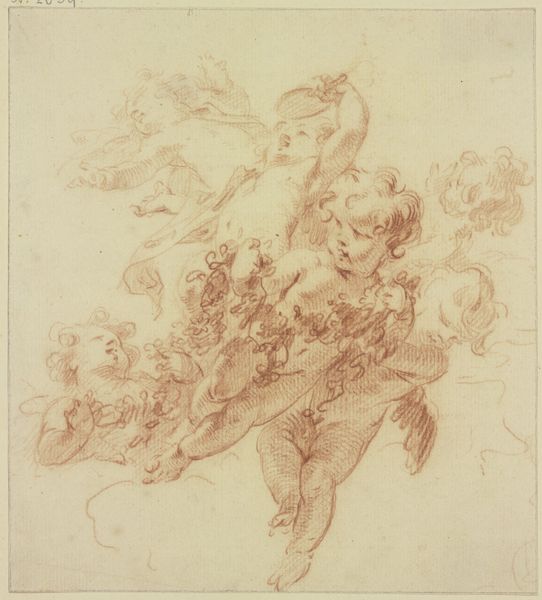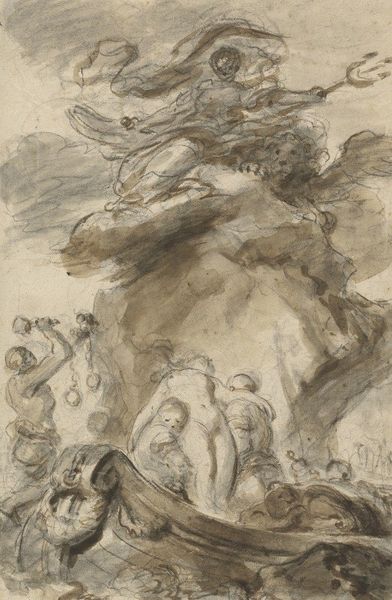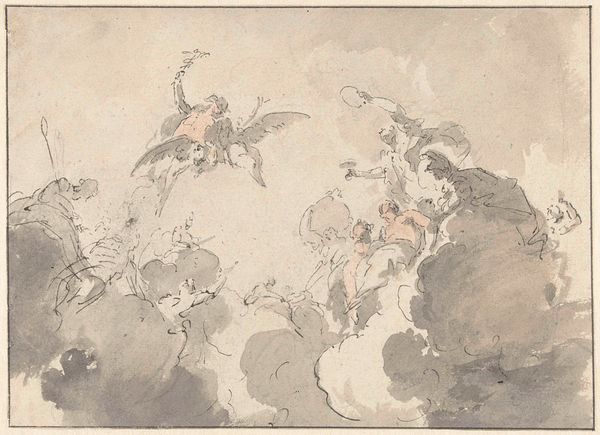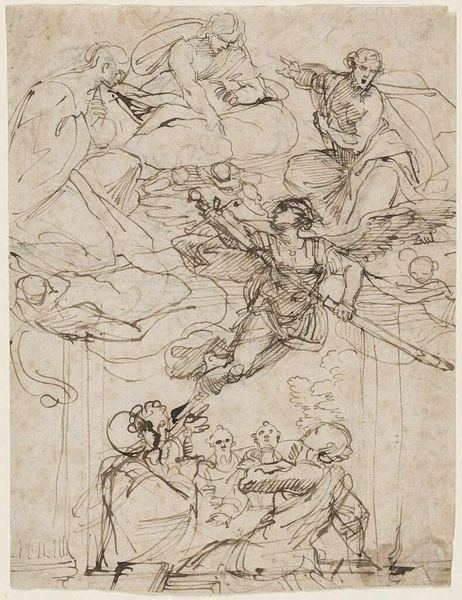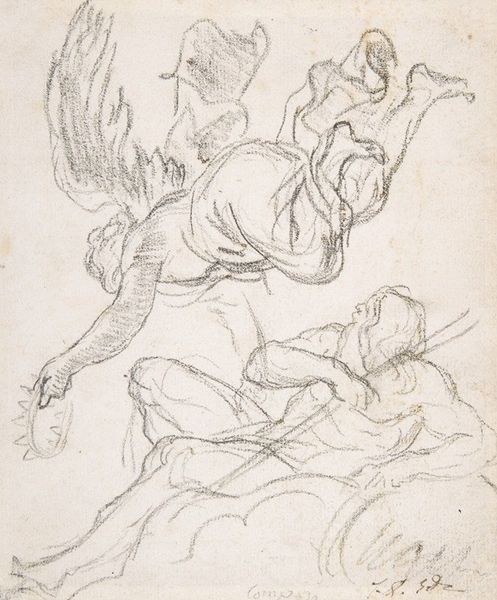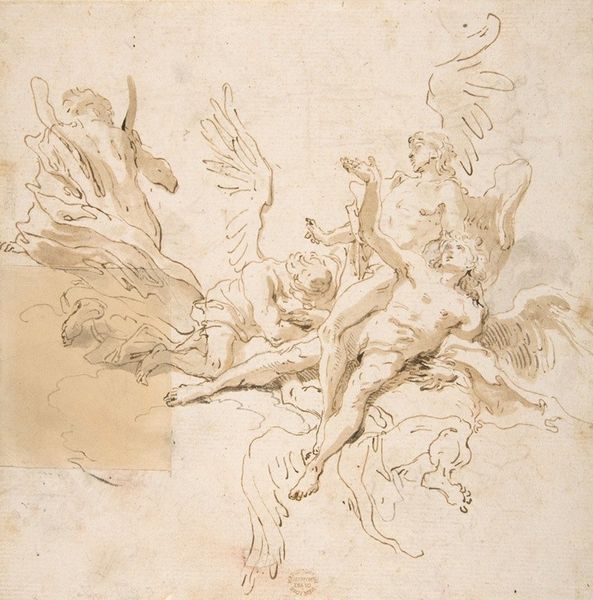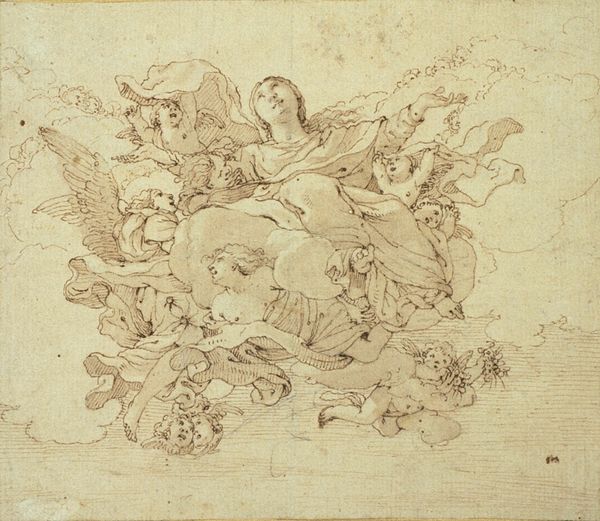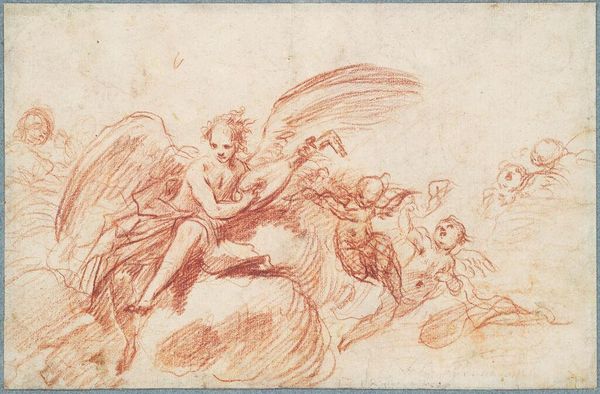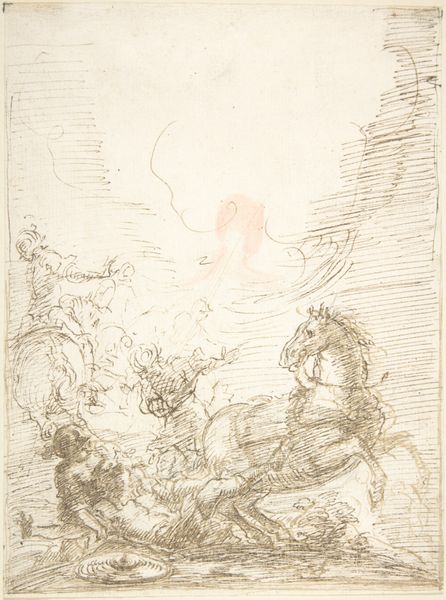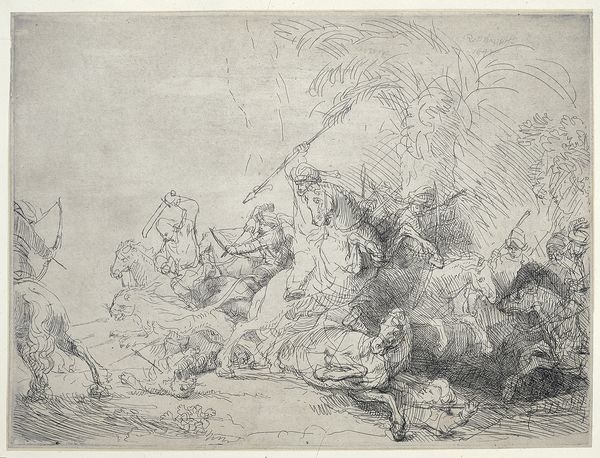
drawing, ink, graphite
#
drawing
#
allegory
#
baroque
#
figuration
#
ink
#
graphite
Copyright: Public Domain: Artvee
Curator: Look at this intriguing drawing, "Jupiter with his Eagle," crafted between 1657 and 1747 by Francesco Solimena using graphite and ink. What strikes you first? Editor: The sheer drama of it. It’s this whirlwind of bodies and feathers all swirling together, kind of feels both heavenly and chaotic at the same time. Curator: Indeed, that baroque dynamism is so key. What’s particularly compelling to me is the evident process, the layered strokes of ink and graphite; we see Solimena grappling with form, thinking through his materials, a study perhaps for a grander, more permanent commission. Editor: Thinking about that grander commission – it places this drawing as part of a system, right? These aren’t just individual artworks existing in isolation; they represent potential labor, future commissions dependent on patrons with specific ideologies. And that classical subject matter, Jupiter—it all feeds into the construction of power. Curator: Precisely. Consider how the paper itself, its preparation, the quality of the inks—these choices contribute to the ultimate presentation and its perception by its intended audience. The support of workshops was crucial, in addition to sourcing these precious materials. Editor: Right, we can’t overlook the inherent power dynamics at play within these classical representations. Here, Jupiter, King of the Gods, is quite literally carried aloft. That gesture speaks volumes about the artist’s interpretation but also what hierarchies were being both maintained and, perhaps subtly, critiqued through art in that period. Curator: An excellent point! Even the use of drawing versus painting is a social commentary. The immediacy, almost democratic feel, stands in contrast to the perceived formality of oil paintings that adorn the aristocratic households. Editor: It all reminds us that even seemingly timeless allegories are deeply embedded in very specific historical and social circumstances. Curator: Indeed. Seeing the layers, and contemplating the means and setting it was created within makes it more real, more human. Editor: Exactly. And considering these aspects gives it a deeper resonance that makes it, paradoxically, even more sublime.
Comments
No comments
Be the first to comment and join the conversation on the ultimate creative platform.
